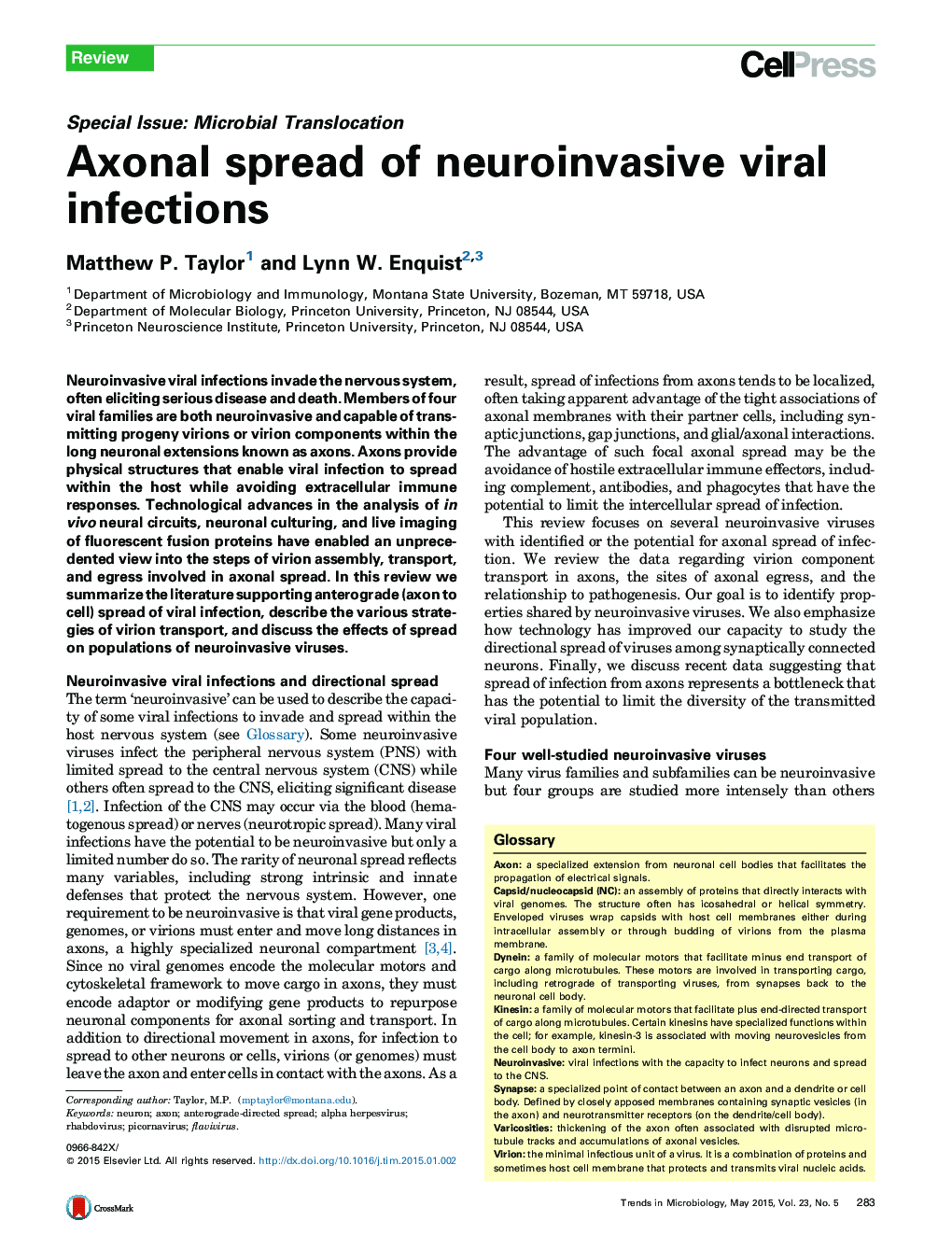| Article ID | Journal | Published Year | Pages | File Type |
|---|---|---|---|---|
| 3421860 | Trends in Microbiology | 2015 | 6 Pages |
•Four viral families have members with a demonstrated capacity for axonal spread of infection.•Anterograde axonal spread of infection requires the transport of virions or virion components from the cell body toward distal axon egress sites.•The axonal spread of infection to connected cells restricts the number of virions transmitted, reducing the diversity of viral genomes.•Restrictions on axonal spread may impact the fitness and virulence of transmitted viral populations.
Neuroinvasive viral infections invade the nervous system, often eliciting serious disease and death. Members of four viral families are both neuroinvasive and capable of transmitting progeny virions or virion components within the long neuronal extensions known as axons. Axons provide physical structures that enable viral infection to spread within the host while avoiding extracellular immune responses. Technological advances in the analysis of in vivo neural circuits, neuronal culturing, and live imaging of fluorescent fusion proteins have enabled an unprecedented view into the steps of virion assembly, transport, and egress involved in axonal spread. In this review we summarize the literature supporting anterograde (axon to cell) spread of viral infection, describe the various strategies of virion transport, and discuss the effects of spread on populations of neuroinvasive viruses.
